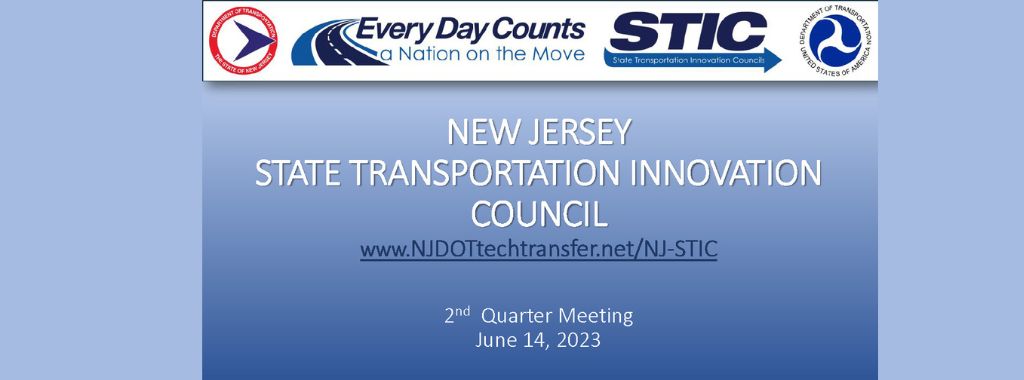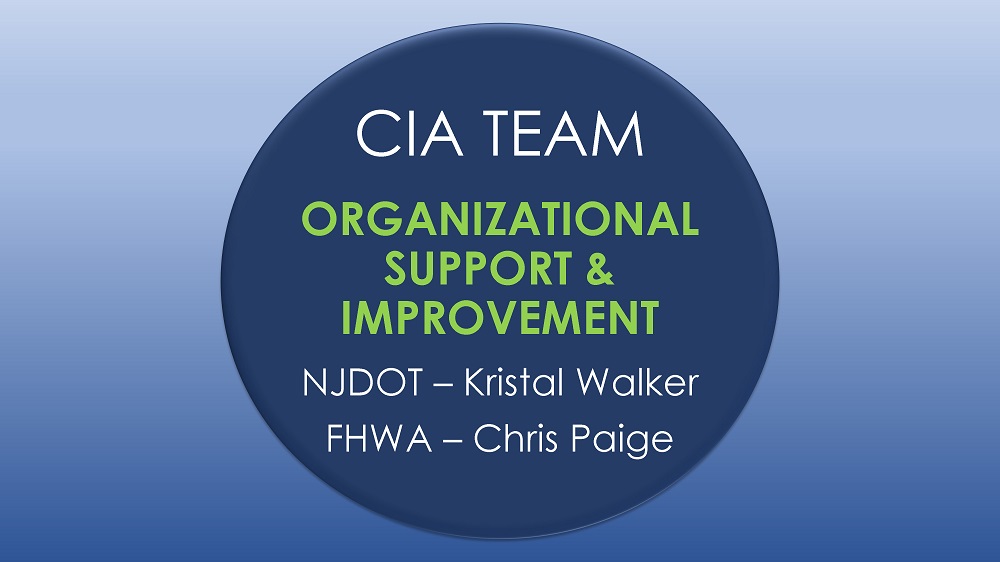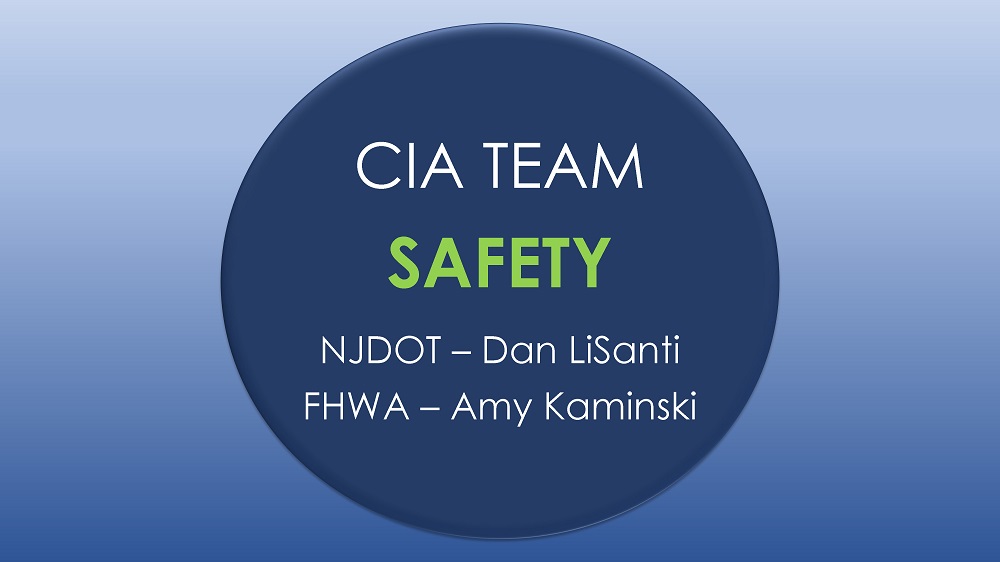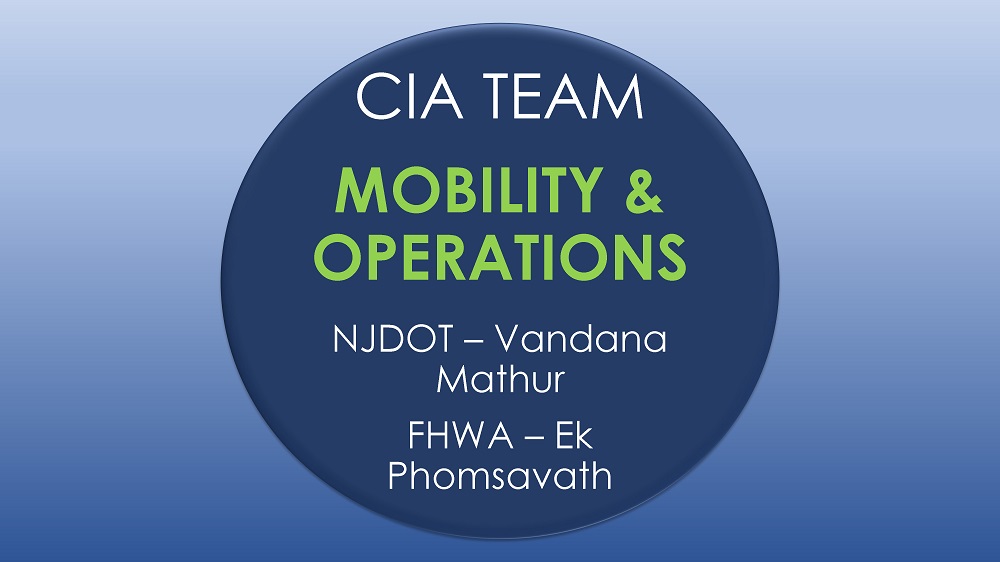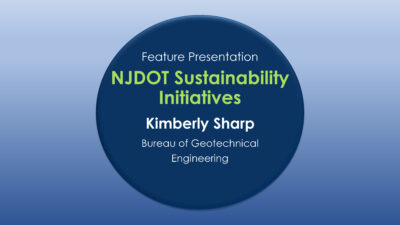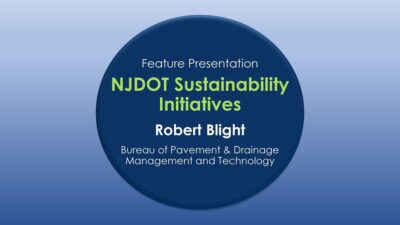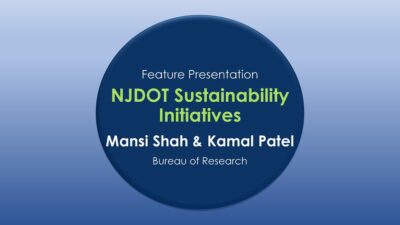The NJ State Transportation Innovation Council (NJ STIC) convened online for the 2nd Quarter Meeting on June 14, 2023. The STIC Meeting Agenda had been distributed to the invitees prior to the meeting. Participants could use the chat feature to offer comments or ask questions of the speakers during the online meeting.
Brandee Sullivan, NJDOT Innovation Coordinator, greeted the meeting participants, followed by Assistant Commissioner Michael Russo who provided the Welcome and Opening Remarks. He noted that there are efforts to hold the 3rd quarter STIC meeting in person. He welcomed Mr. Christopher Paige, Innovation Coordinator and Community Planner for the FHWA NJ Office. Mrs. Sullivan introduced Vandana Mathur, the new CIA Team Lead for Mobility & Operations.
FHWA EDC Innovation. Mr. Paige stated that FHWA will have the EDC-7 baseline reports finalized soon. He noted that, in this EDC round, the progress report schedule has changed. There is no six-month report due this summer; the next report will be due in spring 2024. Mr. Paige also shared that FHWA will hold periodic webinars on EDC-7 initiatives and he will coordinate to send notifications out about the schedule.
Mr. Paige also thanked FHWA and NJDOT staff who attended the American Council of Engineering Companies Design Summit. He noted that the Innovation presentation, which focused on the EDC initiatives, was well received.
Core Innovation Area (CIA) Updates. The meeting continued with presentations from Core Innovative Area (CIA) leaders who provided updates of the status of EDC initiatives on the topics of: Safety, Infrastructure Preservation, Mobility and Operations, Organizational Improvement and Support, and Planning and Environment.
Featured Presentation – NJDOT Sustainability Initiatives.
Three presentations were given on NJDOT Sustainability Initiatives.
Presentation # 1 – Foamed Glass Aggregate. Kimberly Sharp, NJDOT Bureau of Geotechnical Engineering and Geology, spoke about Foamed Glass Aggregate (FGA) which is made from 100 percent recycled glass. Use of the material reduces waste in landfills, alleviates the burden on waste management infrastructure, and promotes a more sustainable approach to handling waste. CO2 emissions and energy use for production is 50 percent less than for other lightweight aggregates used by NJDOT. Due to FGA’s light weight, fewer trucks are needed to transport it, which keeps heavier trucks off the road, and reduces emissions and congestion.
Lightweight and durable, the material is non-leaching, rot-resistant, and non-flammable. Ms. Sharp discussed the manufacturing process and the various applications of FGA in NJDOT projects, including as fill behind retaining walls and abutments, around utilities, tunnels and culverts to lighten loads, underneath roads to raise the profile in areas of flooding. These projects have saved millions of bottles from the landfill.
In the future, FGA may be used for flood mitigation (underground reservoirs), noise walls, as backfill for Mechanically Stabilized Earth (MSE walls), and in rehabilitation projects for abutments and wall reconstruction.
Ms. Sharp mentioned another process they are investigating that makes pellets from plastic bags and places the material in concrete.
Presentation #2 – NJDOT Initiatives for Sustainability in Pavements. Robert Blight, NJDOT Pavement and Drainage Management Technology, talked about innovative pavements including rubber pavements made from scrap rubber tires, recycled asphalt pavement, and recycled plastic waste. The use of these materials has the potential to reduce pavement life-cycle costs, greenhouse gas emissions, energy consumption and noise.
Recycled scrap rubber tires is an engineered waste product the use of which could reduce pollution of water and air from landfill storage. Asphalt rubber is ground tire rubber incorporated into open-graded asphalt pavement material. Some applications recycle up to 1,000 tires per lane mile. Winter maintenance became an issue for NJDOT and application in roadways was paused, but the material could be used on shoulders or for parking lots.
NJDOT used an asphalt rubber gap-graded mixture on a project in 2014 which is still performing well, and asphalt rubber binder in asphalt rubber chip seal was used on a project in 2018.
Reclaimed asphalt pavement (RAP) uses asphalt milled during resurfacing projects. Some concerns include performance issues with the binder and the need to process the material to achieve uniformity rather than adding directly to pavement material. A 2012 project that used a high-RAP mixture is still performing well.
There has been a lot of research into using waste plastic in pavements looking for long-term performance and sustainability. NJDOT has an ongoing research project with Rutgers exploring use of plastic waste as a modifier in pavement materials. Safety, health and environmental concerns with using plastic requires reliance on research and engineering expertise.
Presentation #3 – Sustainable Research Projects. Mansi Shah and Kamal Patel, NJDOT Bureau of Research spoke about current research projects on sustainable materials. Ms. Shah discussed the research process for the Implementation of Pervious Concrete Sidewalks in New Jersey. Ms. Shah described the material which is made of cement, aggregates, water, and admixtures, poured over a stone reservoir that temporarily stores rainwater before infiltration to the subsoil. The material plays a role in stormwater management by reducing puddling and slowing stormwater surface runoff. The implementation phase involved a pilot demonstration sidewalk project in Montgomery Township. Regular maintenance of the material is required to keep the voids free of debris.
Ms. Shah noted that the Bureau of Research seeks to conduct research studies to explore the possibility of recycling scrap tires for use as aggregate in concrete and asphalt. This process addresses a growing environmental problem and threat to health. Ms. Shah suggested collaboration with Robert Blight on this area of mutual interest.
Mr. Patel discussed Energy Harvesting from Roadway and Bridges as an alternative to electricity produced by burning fossil fuels. Energy harvesting uses the current transportation infrastructure to generate electricity for various transportation applications such as powering sensors and other lighting as well as wireless data transfer devices to monitor traffic data and infrastructure. The research explored photovoltaic materials and Piezo electric materials. In the first project phase, researchers explored the configuration of solar panels on noise barriers and found an optimal configuration for maximum power output.
The second project phase employed piezoelectric sensors embedded on bridge structures. Energy harvesting can be achieved by compression caused by traffic traveling over the sensors, or by vibration, caused by traffic loads and winds, detected by sensors attached to the bridge structure. The research focused on sensors attached to bridge structures and what resonant frequency would yield higher voltage outputs. Lab testing and full-scale testing were conducted.
Reminders and Updates. Mrs. Sullivan closed the meeting with information and reminders on the online location of several resources that highlight the NJ STIC and other innovation topics funded through research and technology transfer activities, including:
- NJDOT Tech Transfer Website - http://www.njdottechtransfer.net/
- NJ STIC Website – https://www.njdottechtransfer.net/nj-stic/
NJ STIC Meeting notes including presentations and recordings can be found in the NJ STIC section for the website (https://www.njdottechtransfer.net/nj-stic-meetings/)
Sal Cowan spoke about the new NJDOT Bordentown Training Center. In seeking to address the need for a workforce that is right-sized, properly trained and properly equipped, NJDOT has developed a first-class training facility and a business unit dedicated to training the technical workforce. The training facility will be used specifically by Operations. However, in describing key elements of the facility, Mr. Cowan emphasized that it will be available to serve the entire Department.
Mrs. Sullivan spoke about the 10th anniversary of the 2023 American Council of Engineering Companies Design Summit. The Summit gathers people from various areas of the transportation design industry. This year’s theme was innovation and the event featured several presentations on EDC-7 topics and the role of NJ STIC, and a discussion on the barriers to innovation.
She added that there are free trainings on EDC-7 topics through the Local Technical Assistance Program at Rutgers-CAIT. She shared links to an upcoming schedule of trainings and noted that there will be more trainings available in the future.
Mrs. Sullivan announced that the NJDOT Bureau of Research has combined the innovative ideas portal with the research portal to gather high quality ideas from the transportation community. For more information and to register for an account and submit ideas on the NJ Transportation Ideas Portal, go here.
Mrs. Sullivan also announced that STIC Incentive Program funds are available. The FHWA offers these funds, as well as technical assistance, to support the standardization and advancement of innovative practices in a state transportation agency or other public sector STIC stakeholder. NJ STIC receives $100,000 each year. Mrs. Sullivan asked that the STIC network members communicate these grant opportunities through their networks. She noted that local public agencies are eligible to apply. Find more information, including examples of allowable activities and prior recipients, here.
Mike Russo and Amanda Gendek, Manager, NJDOT Bureau of Research, provided closing remarks.

